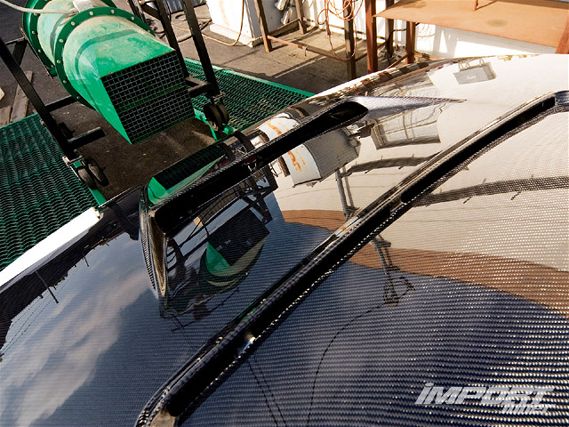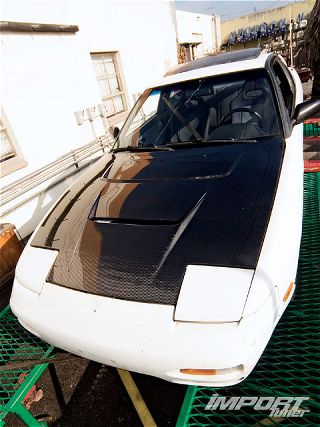"No bullshit-40 horses," Carter insisted, as he explained the results of his R35 GT-R dyno day at XS Engineering for "Driven" (Sept. '08).
"No way," I countered, "you're telling me the GT-R made 40 more horses with its hood open than with it closed?"
"40," testified head XS Engineering tech, Peter Yeung.
Do vented hoods add more horsepower?The question:
And so began another friendly automotive debate, which has boiled into the subject matter of this month's Fact or Fiction: Can adding a vented hood increase power? The OEM GT-R engine bay is sealed so well from the factory, that we suspect popping its hood on the dyno brought power gains not only by allowing excess heat to escape the engine bay, but also by providing more cool, fresh air to be taken in for combustion.
 | Nissan 240sx S13 Hatchback - Fact Or Fiction
| Nissan 240sx S13 Hatchback - Fact Or Fiction
Unfortunately, vented aftermarket hoods for the GT-R are a little hard to come by, and Nissan seemed to frown on the idea of us trying to "modify" their factory piece...so, we contacted Seibon Carbon in Walnut, Calif., about contributing one of their DV-style carbon-fiber hoods for the S13 240SX, then borrowed Carter's car for testing.
The test:
With the SR-powered pseudo 180SX strapped to the rollers of XS's dyno, we were only after one thing. We knew vented hoods decrease temperatures, but how much power, if any, could we expect to gain by adding one? We made several Fourth gear, full-throttle passes with the 240, first with its engine bay covered with factory sheet metal, then with sexy vented Seibon carbon instead. Here's what we found:
 | Nissan 240sx S13 Hatchback - Fact Or Fiction
| Nissan 240sx S13 Hatchback - Fact Or Fiction
The Verdict: Fact
Though it didn't make as much extra power as our GT-R did sans hood, Carter's S13 picked up about 2.5 whp and 1.5 lb-ft of torque with the addition of a vented hood. Underhood temps were lowered, which allowed the SR's GT2560 turbo to pull in larger supply of cool, dense ambient air than before, netting more power across the board. Even better: At highway speeds, air moving at a high velocity under the car will create an area of low pressure in its engine bay, sucking in more ambient air through the Seibon hood vents that would normally flow over the non-vented stocker-further cooling the bay, improving intake air quality, and making even more power. Bottom line: Let more heat out, put more power down.
